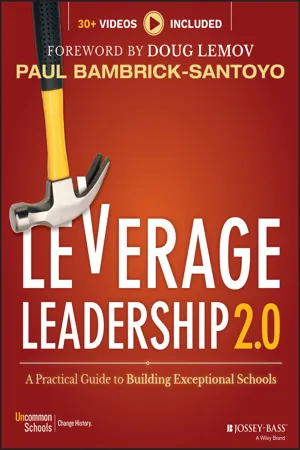
Leverage Leadership 2.0
A Practical Guide to Building Exceptional Schools
Paul Bambrick-Santoyo
- English
- ePUB (apto para móviles)
- Disponible en iOS y Android
Leverage Leadership 2.0
A Practical Guide to Building Exceptional Schools
Paul Bambrick-Santoyo
Información del libro
Cut through the mystique to learn the real drivers of great school leadership
Leverage Leadership 2.0 answers the basic question: what do great school leaders do that separates them from the rest? Rooted in the observation and training of over 20, 000 school leaders worldwide, Leverage Leadership 2.0 offers a practical, updated and easier-to-use follow-up to the original, with field-tested techniques and actionable advice. As educational leaders around the world implement Leverage Leadership ideas, their collective stories have revealed a simple framework by which the seven levers may be implemented: See It, Name It, Do It. This book aligns classic Leverage Leadership principles with this proven framework to streamline implementation and help good leaders become great. Expert discussion and real-life success stories prove that effective leadership is not about innate charisma, charm, or personality—it's about how a leader uses their time.
Aimed at all levels of school leadership, this book shows you what to do, and how and when to do it. The companion DVD includes 30 real-world videos that showcase effective leadership happening in our schools right now, and all templates, tools, and other professional development materials have been fully refreshed with a renewed focus on real-world implementation. Informational, inspirational, and highly motivational, this book explores both the separate components of success and what it looks like as a whole.
- Learn the core principles of effective leadership
- Understand what success looks like on the ground
- Practice the seven levers of leadership that allow transformational growth
- Adopt the tools and techniques that facilitate a schoolwide transformation
Educational leaders from a diverse array of schools around the world have found unprecedented success using the key principles detailed in Leverage Leadership, and this book is inspired — and informed — by their stories. Leverage Leadership 2.0 is the practical resource school leaders need to start making real change happen today.
Preguntas frecuentes
Información
Part 1
Instruction
Chapter 1
Data-Driven Instruction
Peer-to-Peer: Thirty Minutes That Tell It All

- How do we know whether students are learning?
- And when they're not, what do we do?
